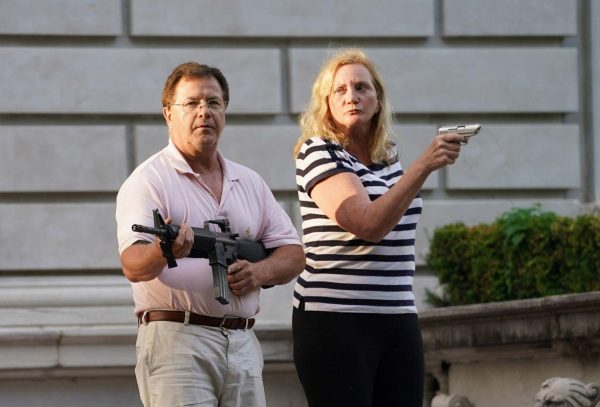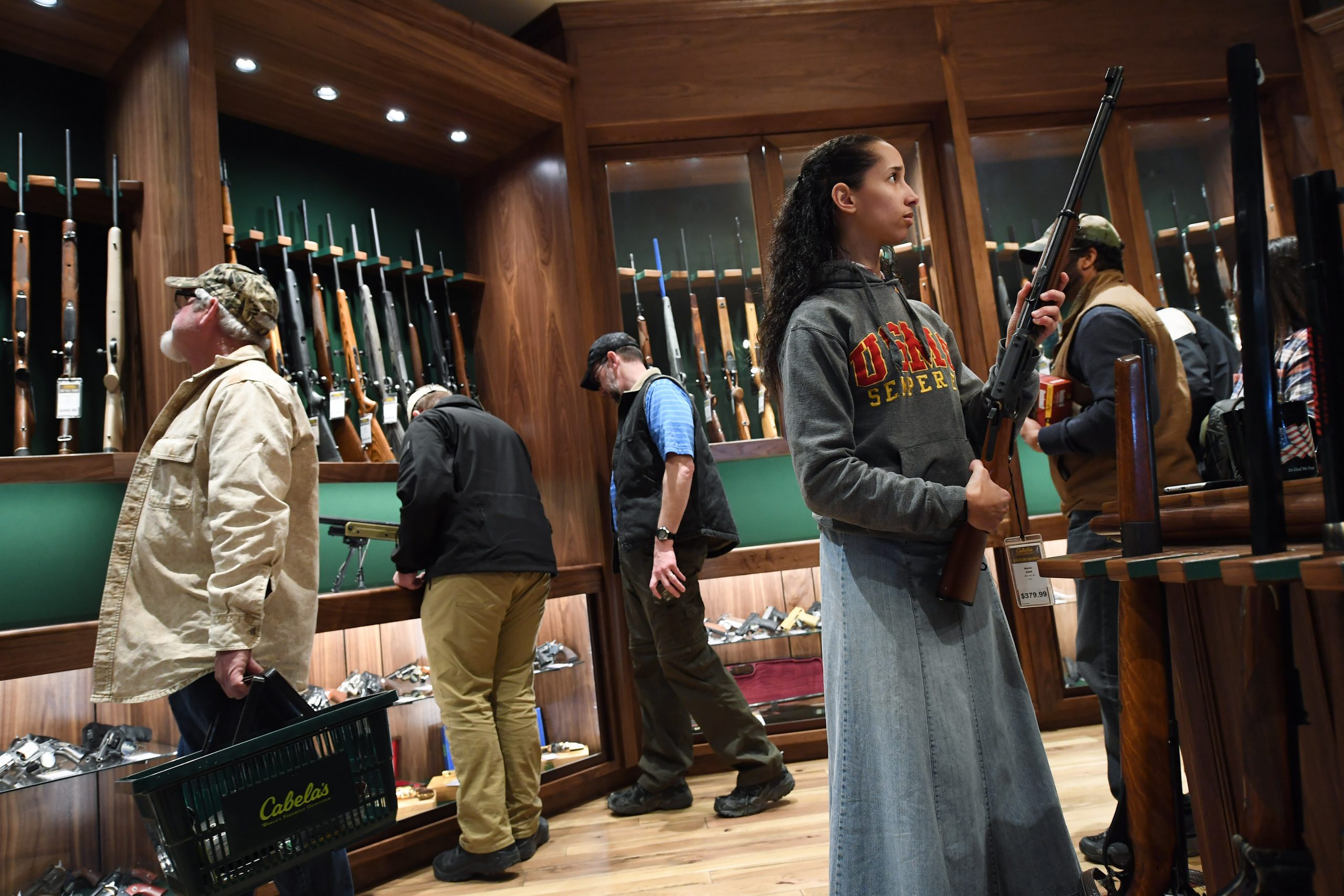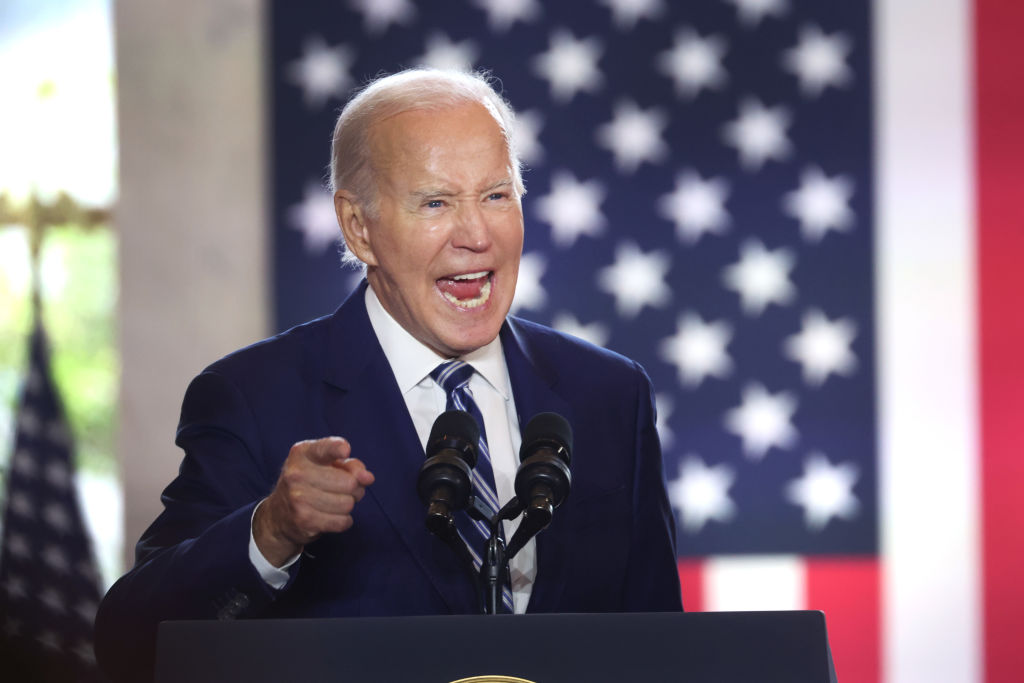Armed Society

It is time to return to the original source of public safety.
That the government agents sworn to protect us have no legal obligation to do so may come as a surprise to some. However, as argued by Chief Justice William Rehnquist in DeShaney v. Winnebago, “nothing in the language of the Due Process Clause itself requires the State to protect the life, liberty, and property of its citizens against invasion by private actors.” Though the Court may be correct regarding the application of the Due Process Clause to this particular set of facts, the underlying principle, further echoed in Town of Castle Rock v. Gonzales, is that our modern regime believes it lacks any obligation to fulfill the dictates of the social compact.
Mass casualty attacks are now an established feature of modern America society. While the underlying cultural causes of this phenomenon are worthy of discussion, our immediate task should be how to best mitigate the next inevitable incident of indiscriminate violence. Threats to public safety are best met by a vigorous and immediate response; this is the underlying premise behind the existence of law enforcement. When the safety of the community is threatened, it is this class of guardians that is responsible for restoring peace and order and, if necessary, to do so through lethal force.
Unfortunately, the men and women entrusted with this duty have increasingly shown a disinterest in doing so. Far from a recent development, law enforcement’s dereliction of duty is a pervasive trend, as evidenced by the fact that nearly half of all reported violent crimes go without an arrest. In a few instances, we have been reminded of law enforcement’s preference to merely “observe and report” rather than “serve and protect” with deadly consequences, such as when officers failed to quickly respond to the Parkland shooting and again as they stood by during the mass race riots of 2020.
We were reminded of this phenomenon once again following the recent events in Uvalde, where officers waited almost an hour to engage an active shooter while onlookers pleaded with them to intervene. In a just regime, the officers who allowed those children to die would be tried for cowardice and dereliction of duty and punished accordingly. In modern America, the two officers fired for failing to intervene in Parkland had their jobs reinstated with back pay. Cowardice is not only unpunished; it is incentivized.
Clearly, we can no longer rely on law enforcement to secure the public square. Faced with these facts, we can either continue to sheepishly entrust our lives and property to a negligent steward while praying that fate doesn’t re-cast us as victims, or we can reclaim that responsibility for ourselves. When threats arise, they can and must be met with a robust and organic response by the people themselves.
The actions of the men who responded to the Sutherland Springs and White Settlement church shootings are a model of the vigilance necessary for citizens to mitigate chaotic acts of violence. But such acts of public courage can’t be a matter of chance. Local communities must take it upon themselves purposefully to cultivate a spirit of guardianship among the citizenry.
An older America understood that while there may be official government entities tasked with promoting domestic tranquility, the duty of ensuring public safety in a self-governing republic ultimately rests upon the people. To this end, we would be remiss to believe that our Second Amendment right ends at its mere expression, that it does nothing more than make a claim against the State. As noted by James Wilson in his famous Lectures on Law, “to each class of rights, a class of duties is correspondent.” It is not enough that an individual claims a negative right against the community; the community, in turn, reserves a positive claim against the individual, in the exercise of his rights, in the form of civic duties.
This principle is conveyed in the very text of the Second Amendment, which not only proclaims the right of the people to “bear arms,” but reminds the citizenry of their individual duty to contribute to “the security of a free State.” As expressed by Melancton Smith, writing as the Federal Farmer, “to preserve liberty, it is essential that the whole body of the people always possess arms, and be taught alike, especially when young, how to use them.”
In accordance with these principles, America was once defined by a grand tradition of popular involvement in both national defense—via the militia—and law enforcement—via the posse comitatus, the “power of the community.” Service within one’s local posse comitatus was once viewed as a necessary duty of republican citizenship, and any individual who neglected to do so was fined for failing to come to the assistance of his neighbors. As described by James Wilson, “when necessity requires it, the sheriff not only may but must at his peril, employ the strength of the county” to suppress any “unlawful force and resistance” against the law. For instance, a 1786 Massachusetts law directly empowered local peace officers to enlist the people’s assistance when suppressing any “Routs, Riots, and tumultuous Assemblies.” Members of these possess were granted the same immunity as the sworn peace-officers if they were to injure or kill a resisting rioter.
Today, a number of counties provide a modern model for such a system of popular involvement in public safety, employing standing posse comitatus consisting of trained volunteers capable of supplementing local law enforcement at a moment’s notice. For instance, the Sherriff’s Office of Hinsdale County, Colorado, frequently receives assistance from a standing posse of armed volunteers. These posse members, several of which are military veterans, must possess a concealed weapon permit and undergo frequent training to ensure proficiency with both their sidearms and rifles. A similar program can be implemented in communities across the United States, with groups of citizens armed and trained to respond to active shooter situations, riots, and other instances of spontaneous violence.
Nor should this response be restricted to an explicit summoning of a peace officer. As evidenced by Uvalde, the impulse to react must be swift and immediate. In such instances, existing alert systems utilized for child abductions and weather alerts can be co-opted to provide a modern method for the ancient common law standard of hue and cry, allowing all able-bodied men to take up their arms and respond to the danger.
A national model for arming and training citizens has existed for over 100 years. In 1903, the Office of the Director of Civilian Marksmanship was created in the War Department to train civilians in the use of the newly adopted M1903 Springfield rifle, should they be called into military service. In 1916, this program was expanded to distribute arms and ammunition to organized civilian rifle clubs. In 1996, the Civilian Marksmanship Program (CMP) was transferred to a federally charted private, non-profit organization dedicated to educating and training citizens in the use of firearms. In addition to providing instruction, the CMP is also authorized to sell surplus military rifles. With the Army’s recent decision to replace the existing M4 service rifle, this program can be revitalized to provide local posse comitatus programs with the necessary arms and training.
Though it is regrettable that we can no longer rely upon our established institutions to secure public safety, we need not become victims. The “occupying force” system of law enforcement is a modern innovation that created a false sense of security which is now being exposed. A return to the traditional, natural rights understanding of self-preservation and public safety is a return to a style of law enforcement befitting republican government and which cultivates the “vigilant and manly spirit” upon which self-government relies. We are blessed to have at our disposal the means by which we can secure our communities and must do so if we value the lives of our children. Security is ours to reclaim. In the words of Founding-era preacher Simeon Howard, “a people who would stand fast in their liberty, should furnish themselves with weapons proper for their defense, and learn the use of them.” The lives of the innocent lost in Uvalde speak to the grim alternative.
The American Mind presents a range of perspectives. Views are writers’ own and do not necessarily represent those of The Claremont Institute.
The American Mind is a publication of the Claremont Institute, a non-profit 501(c)(3) organization, dedicated to restoring the principles of the American Founding to their rightful, preeminent authority in our national life. Interested in supporting our work? Gifts to the Claremont Institute are tax-deductible.
Diving down the woke rabbit holes of the therapeutic and postmodernism.
You can’t count on the state for your security.
The administration prepares to disarm the population.
President Biden’s reading of the Second Amendment is seriously off-kilter.





